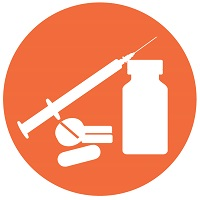Back
Clinical Pharmacology – Biomolecular
Session: Rapid Fire: COVID Pandemic and Beyond: Role of Clinical Pharmacology in Development of Non-COVID and COVID Drugs (BM)
Rethinking the Role of Clinical Pharmacology in a Systems Perspective to Accelerate Biologics (mAbs, Cytokine Modulator) Development
Monday, October 17, 2022
3:45 PM – 4:00 PM ET
Location: 152
.jpg)
Rodney J. Ho, Ph.D NAI FAAPS FAAAS
Executive Director and Professor
Center for WE-REACH
Seattle, Washington
Rapid Fire Speaker(s)
Thanks to the introduction of effective vaccines and therapeutic modalities, all of us are now enjoying the reopening of social and economic activities. This year’s AAPS PharmSci360 national convention is a beneficiary of progress made in the implementation of systems thinking and systems pharmacology. The innovation in diagnostic testing and availabilities of interventional treatment also provide test-to-treat strategies to keep infection to take hold and progressing to respiratory distress and death. The COVID-19 vaccines and therapeutics are built on small and macro-biologic molecules that pharmaceutical scientists have been working to develop enabling technologies and analytical know-how to evaluate them in experimental and clinical settings. The rapid data gathering, and accelerated data dissemination have allowed the building of an integrated disease-and-interventional systems knowledge base that describes viral-host interaction through laboratory and symptomatic tracking, and clinical interventions linked to outcomes have helped identified critical time points where the specific class of pharmacologic agents may have the greatest impact. Systems Pharmacology–integrating multiple data sources, from genetics to drug development as well as repositioning existing and developing new drugs-by use of modern pharmaceutics, pharmacometrics, and modeling tools. Contextual and quantitative integration of the viral and host systems offered the understanding of the viral, disease, and interventional pharmacologic/biologic mechanisms. Large macromolecule or biologics platforms, along with small molecules have been used strategically to neutralize and block viral replication. Some biologics are used to modulate the over-reactive inflammatory host responses. While some molecular platforms may be more suitable for the early course of infection while other are needed at a later phase as infection progress to acute hypoxic or starvation of oxygen that cause respiratory (lung) failure (AHRF). Along with high-flow oxygenation enhancement, the large macromolecule-based therapeutic arsenal has reduced mortality and morbidity in COVID-19 infection. This presentation will provide the systems context and discuss strengths and liability of antibody and cytokine modulators intended to treat COCVID-19 infection and their use in early and later phases of infection as well as that related evolving community-dominating strains of COVID-19 virus SARS-CoV-2 from Alpha to Omicron. Supported in part by Unitaid 2020-39-GLAD; NIH grants AI120176; AI 148055; HL152401; AI149665.
Learning Objectives:
- Understand what is the Systems approach which integrates cumulative knowledge of infectious agents (SARS-CoV-2) and host interaction dynamics (time-course) that resulted in progressive lung and organ failure to define opportunities for pharmacologic intervention or prevention
- Appreciate the distinctions between systems pharmacology and their role in the journey of drug target validation and drug discovery to preclinical and clinical development
- Develop a timely Systems knowledge base critical to guide and select leads and develop a progression plan that includes biomarkers, success matrices, and quantitative approaches in systems pharmacology in the overall drug development plan
- Understand the strengths and limitations of antibody platform and various macromolecular platforms for viral neutralization and modulating host inflammatory responses
- Appreciate the impact of emerging and dominating COVID-19 variants in the community on mAb therapeutics intended to block or neutralize viral replication and infection


